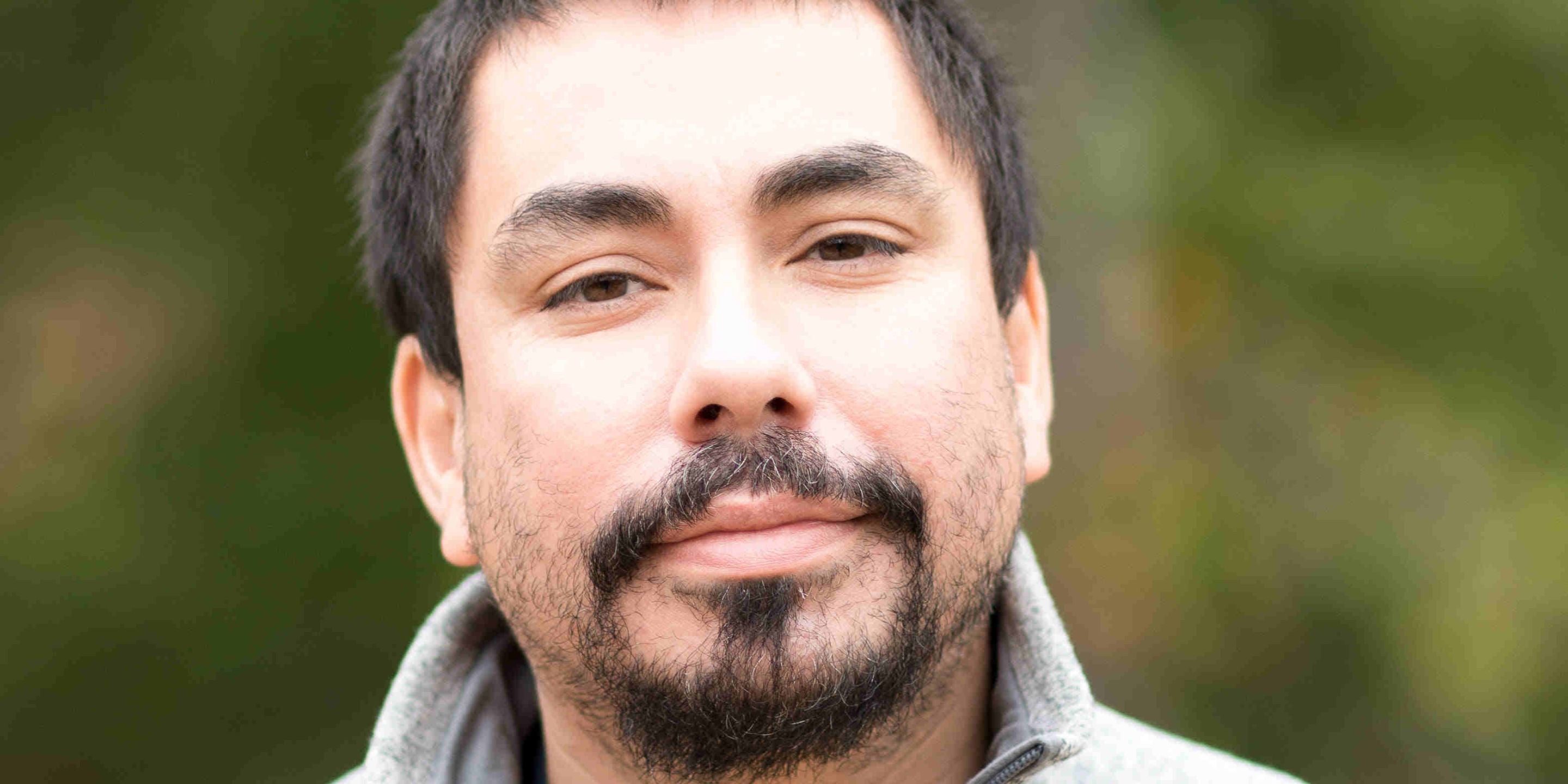Verra is a global leader in setting standards for emissions reductions and removals, and helps the private sector and governments achieve more ambitious climate and sustainable development goals. It was founded 15 years ago in Washington DC to respond to a need for greater assurance in voluntary carbon markets. With the Verified Carbon Standard (VCS) Program, the organisation pioneered standards for voluntary carbon projects to support the growth of voluntary carbon markets. Over the last two years, demand for Verra’s programs and standards has grown rapidly. HC Insider talks to Angelo Sartori, Director of Regional Outreach at Verra, about the work the organisation has been doing and the impact of major changes which came out of COP26 in November 2021.

Understanding carbon markets
Verra’s Verified Carbon Standard (VCS) Program, originally called the Voluntary Carbon Standard Program, enables certified projects to turn their greenhouse gas (GHG) emission reductions into tradable carbon credits. The VCS Program is now the world’s leading GHG crediting program. It has registered more than 1,750 registered projects in over 82 countries that have generated more than 850 million carbon credits. As governments and corporates increasingly recognise the need to take action on climate, issuances of Verified Carbon Units (VCUs) rose from 119 million in 2019 to more than 200 million in 2021.
For airlines and energy companies, the projects that Verra certifies are often central to meeting climate commitments, as they deliver emission reductions and then issue credits that companies can purchase to hit carbon reduction targets. In March 2020, the VCS Program was accepted as one of the six programs eligible to supply emission reduction under the Carbon Offsetting and Reduction Scheme for International Aviation (CORSIA). CORSIA sits under the International Civil Aviation Organization (ICAO) which is a specialized United Nations (UN) agency.
As demand for carbon credits is growing, Verra constantly engages with industry to improve the understanding of the carbon markets.
Angelo Sartori, Director of Regional Outreach at the organisation, tells HC Insider: “Our role with the big energy companies right now often centres on explaining in detail the technical requirements that projects need to meet in order to obtain certification and issuance of VCUs, because these companies are rightly concerned that the carbon credits they buy have real environmental and social integrity.”
Engagement
Sartori adds: “Another important element of our work with oil and gas companies is being in discussions with governments because these companies are trying to better understand local regulations in each country. Some countries already have domestic carbon markets and specific climate change goals, and often we have information about the local situation because we are in touch with those governments, so we can support companies as they navigate these markets.”
Companies with climate change goals, including oil majors, can further benefit from Verra’s ability to facilitate agreements between companies and governments which enable the private sector to support local REDD+ initiatives that reduce emissions from deforestation, forest degradation and increase forest conservation, sustainable management of forests, and enhancement of forest carbon stocks. REDD stands for Reducing Emissions from Deforestation and forest Degradation.
An example is the agreement signed at COP26 that will see Argentina’s Misiones province receiving funds from trading firm Mercuria Energy Trading to help protecting the Misiones jungle. In the first sub-state agreement of its kind, a controlled deforestation program will agree a baseline, measure how deforestation is reduced, and the tons of carbon sequestered by the province can then be converted to carbon credits. The province has 1,300,000 hectares of forest that can be certified, implying an income of as much as $300mn a year to the province, based on World Bank estimates of carbon value.
Sartori says: “Over the last few years, the big companies in the energy sector have clearly become very concerned about climate change, and almost all have now published commitments to become carbon neutral by a certain deadline. In some cases, they have also made declarations about the amount of money they will invest. Right now, companies are focused on engaging with governments and developers to deliver on that.”
Credibility and integrity
Verra aims to differentiate itself in the growing carbon markets through its focus on nature-based solutions. The VCS Program is the only program that has a methodology for blue carbon projects, for example. Blue carbon is the term used to refer to carbon captured by the world’s ocean and coastal ecosystems. Verra is unlocking finance for coastal conservation and restoration, and is also the global leader in agriculture, forestry and other land-based carbon offset projects.
The organisation also frequently responds to inquiries around the credibility of certifications and verification. “Doubts that are expressed in the media often result from a poor understanding of our technical processes. The VCS Program is based on extremely complex and thorough certification methodologies, but those are not easy to understand. Verra is continuously working to maintain the quality of its certification programs and to implement updates that reflect the latest advances in science and technology,” says Sartori.
Integrity is, of course, paramount. In 2020, Verra updated its requirements on the process for REDD+ jurisdictional programs. It is currently updating key methodologies for REDD projects to reflect the latest scientific research, improve the consistency and accuracy of accounting, and facilitate alignment with REDD+ jurisdictional programs.
Such steps have driven significant growth in Verra’s operations, and the organisation now employs more than 70 staff, double the number at the start of the pandemic.
Doubts that are expressed in the media often result from a poor understanding of our technical processes.
Leveraging voluntary carbon markets
Going into COP26 in November 2021, there were concerns that new rules on implementation of Article 6, which determines how governments can trade carbon and make corresponding adjustments to their carbon inventories, might be expanded to use the voluntary carbon market as well.
Making a corresponding adjustment means that when countries transfer a mitigation outcome internationally to be counted toward another country’s mitigation pledge, this mitigation outcome must be un-counted by the country that agreed to transfer it. Verra had argued that voluntary carbon purchases should not have to be accompanied by corresponding adjustments because those underlying emissions reductions from VCUs and removals never get reported by the buyer’s national government, appearing only on corporate sustainability reports.
The finalisation of international rules for the operation of Article 6 in Glasgow was seen as a big step forward for government-to-government cooperation through carbon markets. And it was confirmed that Article 6 will not regulate the voluntary market, though these can be increasingly leveraged as a tool by governments to meet their Nationally Determined Contributions (NDCs) which remain non-binding.
Sartori says: “There’s an infrastructure now available through the Article 6 discussion that enables the voluntary market to contribute to countries being able to reach their Nationally Determined Contributions under the Paris Agreement.”
He says Verra is now focused on what happens with corresponding adjustments. The organisation is trying to formalize pilots with some partner governments to determine how to put things into practice. The rules, alongside the crediting mechanism of the UN Framework Convention on Climate Change that came out of the Kyoto Protocol, contain provisions to allow host countries to incorporate voluntary market transactions into their Article 6 accounting. To do so, they must give authorisation to using voluntary market credits for other purposes, and then include those transactions when calculating corresponding adjustments that they communicate in their two-yearly transparency reports, required under the Paris Agreement from 2024.
Article 6.2 of the Paris Agreement introduced cooperative approaches as a new opportunity for countries to cooperate with one another directly and use existing GHG crediting programs like the VCS to create carbon credits that can also count towards those transparency reports.
Sartori says: “Some countries may want to leverage the private finance provided by voluntary carbon markets to further their own climate action, and that is something many buyers want to contribute to. Other countries may wish to make accounting adjustments for voluntary carbon market transactions that arise from projects in their territories.”
New rules’ impact
While Verra, as a standard-setter, does not speculate on how certain sectors might respond and what the future might look like for carbon credits, it seems likely that buyers will seek out credits backed by such adjustments to provide additional assurance that countries will not scale down mitigation efforts set out in their Nationally Determined Contributions because of successful voluntary market projects impacting emissions.
The fact that emissions, and emission reductions, are recorded at both company and country levels is normal and widespread and should not be a cause for concern, Verra argues. But one issue that now needs looking at is whether lower emissions might prompt countries to lessen their climate action.
Beyond the accounting issues, Verra is also looking at how the new rules from COP26 on baselines, additionality of GHG emissions reductions projects or activity, and crediting periods in the context of Nationally Determined Contributions impact the way projects under the VCS Program continue to drive finance to critical climate action while taking account of growing climate action by host countries. In particular, the concept of additionality is central to the evaluation of projects’ quality and integrity. GHG emissions reductions projects are considered additional if they would not have occurred in the absence of a market for offset credits.
Cross-region demand
In the meantime, Verra continues to see growing demand for its programs as several countries establish – or move to establish – their own domestic carbon markets, among them Colombia, Mexico, South Africa, and Chile.
Sartori says: “The main challenge right now is the complexity of carbon markets, where we see several kinds of carbon markets operating in different ways internationally, nationally and regionally. Not a lot of people understand the differences between the markets, and that has to be resolved.”
A report a year ago from the Taskforce on Scaling Voluntary Carbon Markets, sponsored by the Institute of International Finance, argued that the voluntary market needs to grow by a factor of at least 15 by 2030 to have a measurable impact on climate change. As private sector demand builds up, Verra is working hard to continue to supply high-quality carbon credits to buyers and act as a thought leader in this fast-growing space.

